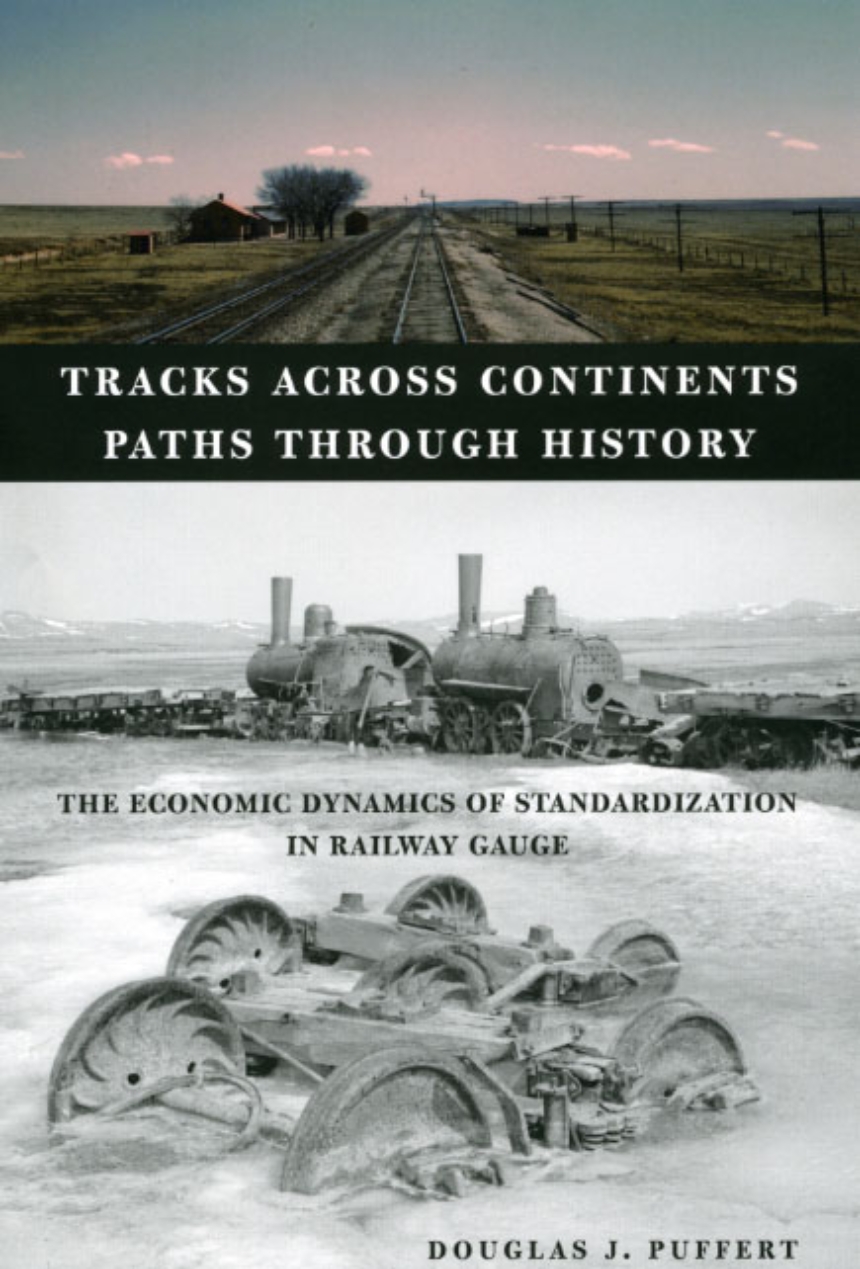Tracks across Continents, Paths through History
The Economic Dynamics of Standardization in Railway Gauge
Tracks across Continents, Paths through History
The Economic Dynamics of Standardization in Railway Gauge
A standard track gauge—the distance between the two rails—enables connecting railway lines to exchange traffic. But despite the benefits of standardization, early North American railways used six different gauges extensively, and even today breaks of gauge at national borders and within such countries as India and Australia are expensive burdens on commerce. In Tracks across Continents, Paths through History, Douglas J. Puffert offers a global history of railway track gauge, examining early choices and the dynamic process of diversity and standardization that resulted.
Drawing on the economic theory of path dependence, and grounded in economic, technical, and institutional realities, this innovative volume traces how early historical events, and even idiosyncratic personalities, have affected choices of gauge ever since, despite changing technology and understandings of what gauge is optimal. Puffert also uses this history to develop new insights in the theory of path dependence. Tracks across Continents, Paths through History will be essential reading for anyone interested in how history and economics inform each other.
376 pages | 21 line drawings, 14 tables | 6 x 9 | © 2009
Economics and Business: Economics--History
History: Military History
Reviews
Table of Contents
List of Illustrations
Preface
Part 1 Introduction
1 Overview
2 Technology and Other Systematic Elements in the Selection of Gauge
Part 2 The History of Gauge Selection
3 Britain and Ireland
4 The Development of Diversity in North America, 1830 to 1865
5 The Resolution of Diversity in North America, 1866 and After
6 Continental Europe
7 India and Australia
8 The Wider World
Part 3 The Economics of Gauge Selection
9 The Selection of Track Gauge as a Path-Dependent Economic Process
10 Variations and Extensions of the Model
Part 4 Conclusion
11 The Dynamics of Track Gauge Standardization
Appendixes
Notes
Bibliography
Index
